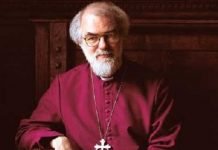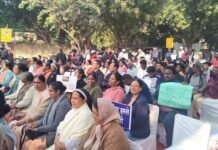A statement from the Rt Rev Peter Hill, Acting Bishop of Chelmsford regarding today’s article in the Spectator Magazine
On 4 February the Spectator published an article about the response of the Church of England to the Covid-19 pandemic and Church of England finances and structures.
The Church of England has written a response to this article highlighting a number of inaccuracies. You can read that response here.
The Spectator article makes some specific references to Chelmsford Diocese which are also misleading and inaccurate.
The assertion that churches in Chelmsford Diocese or across the country have failed to be at the forefront of the pandemic response could not be further from the truth. Whilst difficult decisions have been taken to close for congregational worship, our churches have been more active than ever in our communities; running foodbanks, providing pastoral support to the sick, the lonely, the anxious and the bereaved. Our clergy have provided chaplaincy to staff and patients in local hospitals and support for teachers in our schools. And they have helped those who aren’t online to participate by taking part in worship by telephone or by delivering worship and prayer materials to people at home.
When the latest lockdown was announced on 4 January, Chelmsford Diocese issued advice to our church leaders strongly advising them to close their churches for congregational worship. Chelmsford Diocese which covers Essex and East London, has had the worst infection rates in the country during the second wave of the pandemic. Our hospitals have been under extreme pressure. The decision to give this advice was one that we were extremely reluctant to take and we were fully aware of the implications for parishes. However, with infection rates so high across Essex and East London, we considered it absolutely necessary in order to help protect the most vulnerable and the NHS. This was advice and not instruction and it remains the case that where church leaders feel that they can safely open for congregational worship they are able to do so. The response from clergy and lay leaders across the diocese has been overwhelmingly positive. Nobody wants to close churches for congregational worship but most agree it is necessary. Local authority leaders and Directors of Public Health across the diocese also contacted faith leaders encouraging us to close for congregational worship.
However, whilst we have been closed for congregational worship, our churches have never been busier providing pastoral, spiritual and practical support to those in need in our communities.
The Spectator article also makes some assertions about the financial situation in Chelmsford Diocese which I want to take the opportunity to correct.
The plan to reduce the number of stipendiary clergy posts in the Diocese of Chelmsford was in place long before the Covid-19 pandemic. A decrease in national funding through the Darlow Formula, combined with an increasing shortfall in parish share means that we are running an unsustainable annual deficit. Whilst Covid-19 has accentuated the problem it is not the cause. Chelmsford is not alone in facing these challenges but as a relatively new diocese we have less historic assets than other dioceses and we have always been under resourced in terms of financial capacity to deploy clergy. This has been exacerbated by the fact that we are the area of England with the greatest increase in population in the last 30 years. There are deaneries within East London with higher populations than some dioceses and considerably fewer clergy.
Nobody wants to reduce the number of stipendiary clergy, but the reality is that the vast majority of the diocesan budget is spent on stipendiary clergy and the vast majority of our income comes from parishes. Unless we see a significant increase in parish giving, we cannot balance the books in other ways.
This is not a negative approach. Our duty is to do this work prayerfully and in a way that lays the foundations for mission and ministry to flourish in the future. Continuing to run an unsustainable deficit on this scale without taking action, would lead us to a place where, in the near future, we would be forced to make drastic cuts, more quickly and indiscriminately.
It is inaccurate to say that cuts aren’t being applied to other elements of the diocesan budget. The diocesan staff payroll has fallen in the last year as we have taken the decision not to backfill a number of posts. We also expect most of the reductions in stipendiary clergy posts to be achieved through retirements and clergy moving from posts that are to close, into the considerable number of currently vacant posts that will remain. However, this process is difficult for all concerned and especially our clergy for whom it causes understandable anxiety. Providing appropriate care and support is our priority and each priest and parish is being and will be communicated with and supported by their Archdeacons, Area Deans and Bishops.
These are difficult times for all of us, in the church, in our local communities and in wider society, but I believe we can be hopeful for the future in Chelmsford Diocese.
That hope comes from the positive response to our Generous God, Generous Disciples Stewardship Initiative, which is a long term initiative to support clergy and parishes in their work to increase giving. We are seeing recognition by many in the diocese that increasing giving is at the heart of building a flourishing mission and ministry for the future. Indeed, giving and income from parish share has been higher than we had expected and hoped for during the pandemic and we have seen many successfully incorporate giving into online worship.
That hope also comes from the work that is taking place in our new worshiping communities. Because whilst there has been a significant decrease in national funding through the Darlow formula we have received significant ringfenced funds from the national church to build new worshiping communities in the areas of our diocese with rapid population growth. Responding to the growth in population in these areas is vital to our long term mission and ministry.
Most of all that hope comes from the incredible response we have seen from our churches and communities during the pandemic. This has been a liminal moment for the Church of England and far from becoming a Holy Relic, we remain fully equipped and determined to be a life giving movement in Christ.



